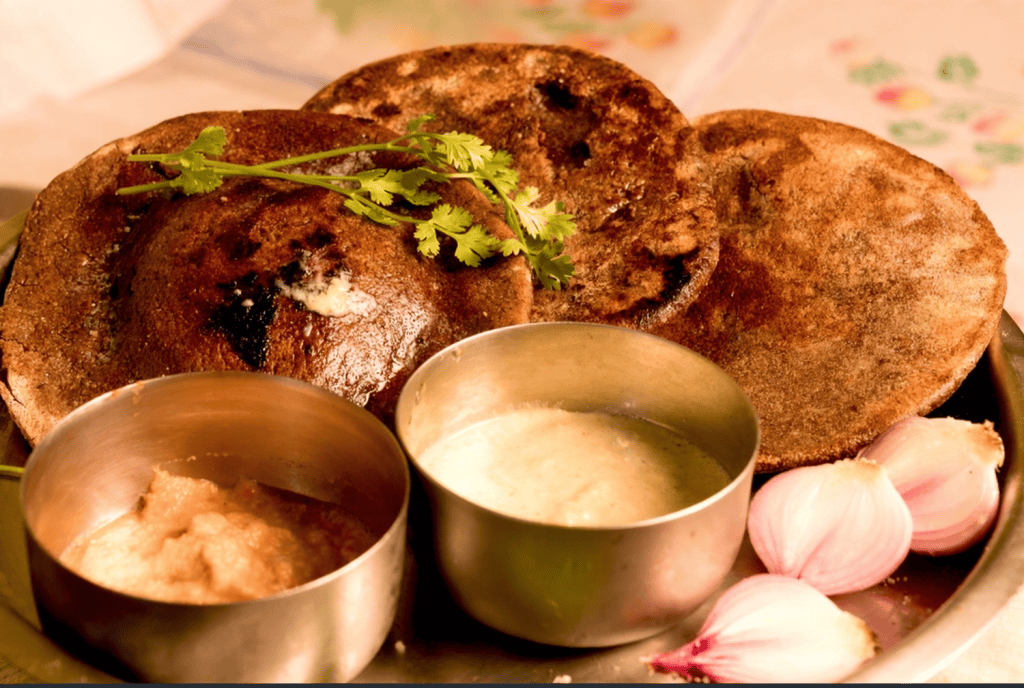Discover the culinary heritage of Uttarakhand, where mountain flavours speak softly through every bite, and timeless traditions simmer in every dish

Nestled amid snow-capped peaks and temple-studded valleys, Uttarakhand exudes a quiet mystique. Known for its sacred rivers and spiritual sanctuaries, the state also guards a lesser-sung treasure—its cuisine. Simple yet soulful, earthy yet elegant, the food of Uttarakhand is not a loud declaration but a gentle invitation.
This is not a cuisine of flamboyance. It’s a cuisine of nourishment. Rooted in altitude and ancestry, it offers a sensory map of life in the hills—resilient, rhythmic, and deeply mindful of nature.
Two Regions, One Soul: Garhwal & Kumaon
Uttarakhand’s culinary identity is shaped by two distinct cultural belts: Garhwal in the west and Kumaon in the east. Each has its own repertoire, subtly distinct in technique and taste, yet bound by a shared philosophy—use what the land gives, waste nothing, and cook with heart.
Where Garhwal leans on slow-cooked stews and hearty dals, Kumaoni cuisine delights in spice-laced vegetables and wild herbs. Grains like madua (finger millet) and jhangora (barnyard millet) stand in place of refined flour. Seasonal vegetables, lentils, and foraged greens bring the landscape to the plate.
The resulting meals are humble and deeply satisfying, much like the people who prepare them.
The Roots Run Deep
Centuries of isolation due to mountainous terrain meant that locals had to cultivate a diet that was sustainable, nutritious, and adaptable to long winters. What emerged was a farm-to-fork philosophy, long before it became a trend.
Millets, including madua, jhangora, and cholai (amaranth), are prized for their high nutrition and adaptability to rocky soil. Pulses like gahat (horse gram), bhatt (black soybean), and urad (black lentil) dominate. Foraged greens—kandali (nettles), linguda (fiddlehead ferns), and bichhu ghas—are cooked into nutrient-rich saags.
Mustard oil lends depth. Spices are minimal—often restricted to turmeric, cumin, asafoetida, and the elusive jakhya seed, a wild herb that crackles in hot oil, imparting its signature nuttiness.
This is mountain food in its purest form—earthy, balanced, and beautifully aware of its terrain.
Signature Dishes: Crafted by Nature, Cooked with Intuition
Gahat ki Dal: A defining staple, this is a slow-cooked horse gram curry, often paired with rice. It’s high in protein and perfect for the cold climate. The dal is tempered with jakhya and garlic, giving it a warm, aromatic finish.
Kafuli: Uttarakhand’s beloved green curry, made from spinach and fenugreek leaves. Thickened with rice flour and flavoured with ginger and chillies, it’s a comforting winter delicacy served with steamed rice or roti.
Phaanu: This Garhwali speciality is a thick lentil curry made with a mix of soaked dals. Hearty and nutritious, it’s a slow affair that rewards patience with depth of flavour.
Chainsoo: An intense black gram preparation with a smoky note, thanks to the dry roasting of lentils before grinding. It’s a robust dish often eaten with steamed rice and ghee.
Aloo ke Gutke: Simple yet bold, these spiced potato chunks are tossed in turmeric, jakhya, and chilli powder. Often served during festivals and village feasts, it pairs well with bhangjeera chutney or curd.
Dubuk: Ground soaked pulses like gahat or bhatt cooked into a thick curry. Comforting and warming, it is especially popular in Kumaon during winters.
Thechwani: Radish or potatoes are crushed and slow-cooked in mustard oil with minimal spices. Its texture is as memorable as its tangy, sharp flavour.
Bhangjeera Raita: A creamy accompaniment made with curd and the unique bhangjeera (Perilla seeds), this raita offers a burst of nuttiness and pairs beautifully with rice-based dishes.
Bhatt ki Churkani: A Kumaoni favourite made from black soybeans, this curry is both rustic and nutritious, often cooked in iron pans to enhance iron content.
Baadi: Made using buckwheat flour and served with ghee or local curries, Baadi is one of the most wholesome meals of the region.
Wild Notes: A Reimagined Jungli Shikar
Historically, the hills echoed with the history of wild game hunting, especially during festivals. Dishes like Jungli Shikar, made with boar or goat meat, were once reserved for special occasions. Today, the same preparation is reimagined using free-range mutton or chicken, marinated with curd and mustard oil, and slow-cooked in iron pots with minimal spices, letting the meat speak for itself.
It’s the kind of dish that turns a kitchen into a storybook.
Sweet Nostalgia
Baal Mithai: A culinary emblem of Almora, Baal Mithai is made from roasted khoya coated in tiny white sugar balls. It’s chewy, rich, and carries the taste of festivals past.
Singhal: Made with semolina, banana, curd, and cardamom, this flower-shaped fritter is deep-fried to golden perfection. Traditionally served during weddings, its design is as charming as its taste.
Pua Lapsi: A celebratory duo of sweet wheat pudding and fritters, this dessert is a winter staple and often part of harvest festivities.
Arsa: Soft yet crunchy, these rice-jaggery sweets are a Kumaoni winter delight, enjoyed during weddings and family gatherings.
Singori: Khoya-based sweet wrapped in Maalu leaves. The leaf imparts a distinctive aroma, making each bite a celebration.
Jhangora ki Kheer: A delicately flavoured kheer made using barnyard millet, milk, and cardamom, garnished with dry fruits.
The Elixirs of the Hills: Sips with a Story
Buransh Juice: Made from the blood-red blossoms of the rhododendron, this vibrant drink is tart, refreshing, and loaded with antioxidants. It’s a seasonal affair—served chilled in summer and slightly warm in winter.
Herbal Pahadi Chai: Infused with tulsi, nettles, lemongrass, and wild flowers, this tea is brewed in copper kettles and believed to boost immunity. Sipped slowly, it offers a bouquet of the Himalayas in every cup.
Traditional Recipes: Straight from the Pahadi Hearth
Kafuli – The Green Soul of Uttarakhand
Ingredients:
- 1 cup spinach
- ½ cup fenugreek leaves
- 1 tbsp rice flour
- 1 tsp jakhya
- 2 tbsp mustard oil
- 1 tsp ginger paste
- 1 green chilli, slit
- Salt to taste
- Method:
Blanch and blend the greens into a paste. - In a kadai, heat mustard oil, add jakhya, then ginger and green chilli.
- Add the paste, salt, and turmeric.
- Mix rice flour in water and stir in.
- Simmer till thick. Serve with steamed rice.
Buransh Juice – The Crimson Elixir of the Hills
A signature drink of Uttarakhand, Buransh Juice is made from the vibrant red flowers of the Rhododendron arboreum, locally known as Buransh. Revered not just for its refreshing taste but also for its medicinal properties, this floral beverage is rich in antioxidants and believed to aid heart health, reduce inflammation, and improve stamina—making it both a tonic and a treat.
Ingredients:
- 15–20 fresh Buransh (rhododendron) petals, cleaned and de-stemmed
- 1 litre water
- ½ cup sugar (adjust to taste)
- Juice of 1 lemon
- A pinch of rock salt (optional)
Method:
- Rinse the Buransh petals gently under cold water to remove any dirt or pollen.
- In a deep pan, bring the water to a boil and add the petals. Let it simmer for 10–15 minutes until the water takes on a deep crimson hue and the petals wilt.
- Strain the liquid into a bowl, discarding the petals.
- While the liquid is still warm, stir in the sugar until fully dissolved.
- Allow it to cool, then add lemon juice and a pinch of rock salt for balance.
- Chill and serve over ice, garnished with mint leaves or a thin slice of lemon for a refreshing twist.
Serving Note: Traditionally served in earthen or copper cups, this tangy-sweet drink is a springtime favourite and a must-have during local fairs and celebrations.
More Than Food: A Living Tradition
Food in Uttarakhand is closely intertwined with festivals, climate, and community. Every dish marks a season, a celebration, or a sacred journey. During Harela, the harvest festival that welcomes the monsoon, families come together to prepare traditional foods using freshly sprouted grains, wild greens, and rain-loving herbs—a culinary blessing to invoke prosperity and good rains. In the lead-up to Makar Sankranti, homes bustle with the making of til ke laddoo and urad dal pakoris, symbolising warmth and nourishment for the winter ahead.
The grand Nanda Devi Raj Jat Yatra, held once every twelve years, is as much a culinary test as a spiritual one. As pilgrims embark on the arduous high-altitude trek, they rely on time-honoured foods crafted for durability and sustenance—badis (sun-dried lentil dumplings), millet rotis, pickled turmeric roots, and jaggery-based sweets provide not just energy, but a link to ancestral endurance.
In village kitchens, the tools of tradition are still revered: copper vessels for their purity, iron kadhais for their heat retention, and stone grinders (sil batta) for their flavour-enhancing texture. These are not mere utensils—they are heirlooms.
Local herbs play a vital role, both in flavour and healing. Jakhiya (wild mustard), with its popping crackle in hot oil, is used to temper vegetables and lentils. Bhangjeera (Perilla seeds) lends its nutty richness to raitas. Gandrayani, a fragrant local oregano-like herb, is often added to saags. Timur (Himalayan Sichuan pepper) brings a tingling citrusy heat to chutneys. Wild mint, lemon balm, and tulsi are brewed into restorative teas or crushed into fresh chutneys.
Cooking in the hills is the art of listening—to the rhythm of seasons, the scent of mountain herbs, and the stories murmured by grandmothers beside smoky chulhas, where embers glow like the pulse of memory.
The Revival: From Village Kitchens to Boutique Menus
Once overlooked, Uttarakhand’s cuisine is now finding the spotlight it deserves. Sustainable resorts and wellness retreats across the state have begun celebrating local ingredients and recipes. Curated experiences like Taste of Uttarakhand menus in select urban restaurants offer a modern tribute—featuring millet khichdis, rhododendron sorbets, and gahat galouti kebabs.
Even in Delhi, Mumbai, and Bengaluru, mountain pop-ups are gaining traction, helping diners reconnect with a cuisine that is soulful, sustainable, and distinctly Indian.
Modern chefs are now taking these rustic dishes and giving them a gourmet twist—kafuli espuma with truffle oil, bhangjeera raita foam, and Baadi gnocchi with burnt garlic butter are showing up in luxury dining spaces. Drinks too, are seeing reinvention: Buransh mimosas, rhododendron negronis, and jhangora-millet smoothies are delighting urban palates. This new wave not only preserves heritage but also makes it relevant to contemporary tastes and wellness-conscious lifestyles.
The Last Bite: Why Hill Flavours Taste Better
Uttarakhand’s cuisine is a masterclass in restraint. It reminds us that richness is not always in excess. It can lie in the humble lentil, the foraged fern, the nutty seed that grows wild on slopes. To eat in Uttarakhand is to embrace a slower pace. A rhythm where seasons dictate the menu, and every dish brings together ecology, economy, and emotion.
In an age of fast food and flash trends, the hill cuisine of Uttarakhand whispers something timeless: flavour is memory, and simplicity is an art.
Read More: Latest



